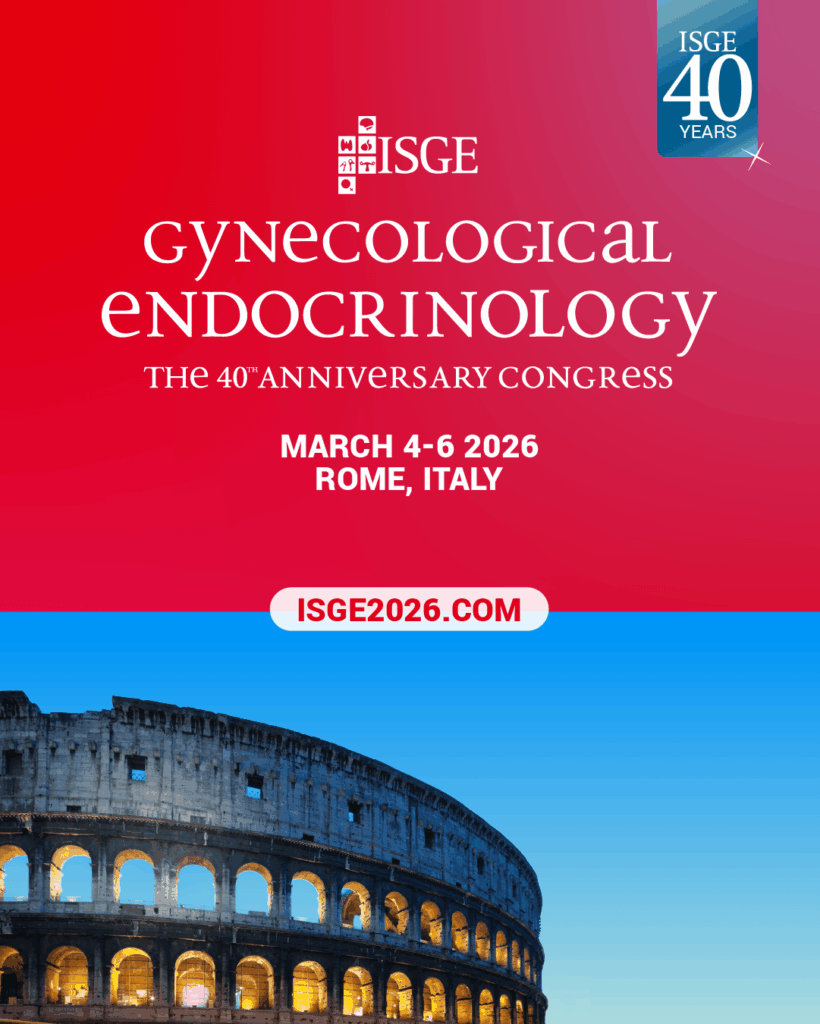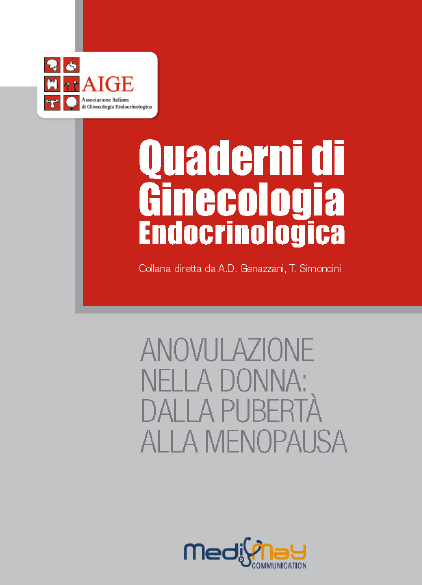-
Sergio Reis Soares, Alicia Martínez-Varea, Juan Jose Hidalgo-Mora, Antonio Pellicer
Pharmacologic therapies in endometriosis: a systematic review
Fertility and Sterility 2012, 98:529–55Abstract
To assess the literature on preclinical and clinical efficacy and safety data of pharmacologic groups proposed in the treatment of endometriosis, we performed a systematic review of publications from March 2002 to January 2012 via PubMed search. Additional relevant articles were identified from citations within these publications. A high number of medications were tested in preclinical models of endometriosis due to their theoretic capacity of disrupting important pathophysiologic pathways of the disease, such as inflammatory response, angiogenesis and cell survival, proliferation, migration, adhesion, and invasion. Tumor necrosis factor a-blockers, nuclear factor kB inhibitors, antiangiogenic agents, statins, antioxidants, immunomodulators, flavonoids, histone deacetylase inhibitors, matrix metalloproteinase inhibitors, metformin, novel modulators of sex steroids expression, and apoptotic agents were all effective in in vitro/animal models. Most of these agents have not been tried in the clinical setting, mainly because of the high risk of adverse effects. However, some of them can be used in humans. Dopamine agonists and valproic acid have already been tested in pilot studies with good results. Etanercept, metformin, and statins are used in humans for other indications, and endostatin is now being tested in phase 2 oncologic trials. These drugs may constitute alternatives to conventional therapy with estrogen inhibitors and anti-inflammatory agents.
-
Philippe R. Koninckx, Anastasia Ussia, Leila Adamyan, Arnaud Wattiez, Jacques Donnez
Deep endometriosis: definition, diagnosis, and treatment
Fertility and Sterility 2012, 98:564–71Abstract
Deep endometriosis, defined as adenomyosis externa, mostly presents as a single nodule, larger than 1 cm in diameter, in the vesicouterine fold or close to the lower 20 cm of the bowel. When diagnosed, most nodules are no longer progressive. In >95% of cases, deep endometriosis is associated with very severe pain (in >95%) and is probably a cofactor in infertility. Its prevalence is estimated to be 1% –2%. Deep endometriosis is suspected clinically and can be confirmed by ultrasonography or magnetic resonance imaging. Contrast enema is useful to evaluate the degree of sigmoid occlusion. Surgery requires expertise to identify smaller nodules in the bowel wall, and difficulty increases with the size of the nodules. Excision is feasible in over 90% of cases often requiring suture of the bowel muscularis or full-thickness defects. Segmental bowel resections are rarely needed except for sigmoid nodules. Deep endometriosis often involves the ureter causing hydronephrosis in some 5% of cases. The latter is associated with 18% ureteral lesions. Deep endometriosis surgery is associated with late complications such as late bowel and ureteral perforations, and recto-vaginal and uretero-vaginal fistulas. Although rare, these complications require expertise in follow-up and laparoscopic management. Pain relief after surgery is excellent and some 50% of women will conceive spontaneously, despite often severe adhesions after surgery. Recurrence of deep endometriosis is rare. In conclusion, defined as adenomyosis externa, deep endometriosis is a rarely a progressive and recurrent disease. The treatment of choice is surgical excision, while bowel resection should be avoided, except for the sigmoid.
-
Renata Britto, Leila Araújo, Ione Barbosa, Lidia Silva
Improvement of the lipid profile in post menopausal women who use estradiol and testosterone implants
Gynecological Endocrinology 2012, 28(10): 767–769Abstract
Objective: This study evaluating the lipid profile in women in post menopause using the hormone therapy (HT) with implants of estradiol and testosterone.
Method: One year prospective cohort with 122 patients separated in group 1, not using HT, group 2 starting the use of HT, and group 3 with prior use of implants of estradiol and testosterone. All patients performed serum dosages of total cholesterol, HDL and triglycerides, in the beginning of the study and after 1 year.
Discussion: The use of E and T implants showed some statistically significant decrease in TC at the beginning of the HT and some decrease in LDL in the group using HT. In the group without HT there was no difference in lipid profile. -
Chin-Hsiao Tseng
Diabetes, metformin use, and colon cancer: a population-based cohort study in Taiwan
Eur J Endocrinol 2012 167 409-416Abstract
Objective A retrospective cohort study, using a population-based reimbursement database, was conducted for investigating the relationship between diabetes and colon cancer and assessing whether metformin had a protective effect.
Methods Overall, 493 704 men and 502 139 women, covered by the National Health Insurance, without colon cancer were followed from 2003 to 2005. Cox regression evaluated the adjusted relative risk (RR), considering confounders and detection examinations.
Results Even though diabetes patients had a significantly higher probability of receiving examinations that could lead to the detection of colon cancer, they had a significantly higher risk (24%) of this cancer after adjustment. Metformin users had a significantly lower risk (27%) of colon cancer. While comparing patients with diabetes for <1, 1–3, and ≥3 years to nondiabetes individuals, the adjusted RR (95% confidence interval) was 1.308 (1.020–1.679), 1.087 (0.900–1.313), and 1.185 (1.055–1.330) respectively. The higher risk among those with diabetes for <1 year suggested a possible reverse causality or a link with prediabetes. However, diabetes still might play some role in the development of colon cancer in those with diabetes for ≥3 years. The duration of metformin use showed an inverse trend, with a significant RR of 0.643 (0.490–0.845) in users for ≥3 years, when compared with nonusers. In addition, metformin may reduce colon cancer risk associated with chronic obstructive pulmonary disease (a surrogate for smoking).
Conclusions Following adjustment for potential detection bias and other covariates, diabetes remains a significant risk factor for colon cancer. Metformin may protect against colon cancer. -
Janelle Luk, Saioa Torrealday, Genevieve Neal Perry, Lubna Pal
Relevance of vitamin D in reproduction
Hum. Reprod. 2012, 27(10): 3015-3027Abstract
The steroid hormone vitamin D is historically recognized for its relevance to bone health and calcium homeostasis. Recent years have witnessed a shift in focus to non-skeletal benefits of vitamin D; in this latter context, an accruing body of literature attests to a relevance of vitamin D to reproductive physiology. This article reviews the existing data about the diverse and previously underappreciated roles for vitamin D in reproductive health. A large body of available literature suggests that vitamin D deficiency may be detrimental to reproductive biology. However, given that our appreciation of vitamin D’s role in reproductive physiology is almost entirely shaped by ‘associative’ studies and that data based on prospective interventional trials are limited, these concepts remain predominantly conjectural. Exact mechanisms whereby vitamin D may participate in the regulation of reproductive physiology remain far from clear. This review underscores a need for appropriately designed intervention trials to address the existing knowledge gaps and to delineate the specific roles of vitamin D signaling in reproductive biology.
-
Francesca Raffi, Mostafa Metwally, Saad Amer
The Impact of Excision of Ovarian Endometrioma on Ovarian Reserve: A Systematic Review and Meta-Analysis
J Clin Endocrinol Metab 97: 3146–3154, 2012Abstract
Context: Endometriomas are mainly treated surgically. However, there has been concern over the potential damaging effect of this surgery on ovarian reserve.
Objective: The aim of this meta-analysis was to investigate the impact of surgery for endometriomas on ovarian reserve as determined by serum anti-Mu¨ llerian hormone (AMH).
Data Sources: MEDLINE, PubMed, and Embase were searched electronically.
Study Selection: All prospective cohort studies that analyzed changes of serum AMH concentrations after surgical treatment of endometriomas were eligible. Twenty-one studies were identified, of which eight were selected for meta-analysis. Data Extraction: Two reviewers performed the data extraction independently.
Data Synthesis: Pooled analysis of 237 patients showed a statistically significant decrease in serum AMH concentration after ovarian cystectomy (weighted mean difference -1.13 ng/ml; 95% confidence interval -0.37 to -1.88), although heterogeneity was high. Sensitivity analysis for studies with a preoperative serumAMHlevel of 3.1 ng/ml or greater improved heterogeneity but also still showed a significant postoperative fall in serum AMH (weighted mean difference -1.52 ng/ml, 95% confidence interval -1.04 to _2).
Conclusion: The results of this study suggest a negative impact of excision of endometriomas on ovarian reserve as evidenced by a significant postoperative fall in circulating AMH.
Letteratura scientifica selezionata
-
Sergio Reis Soares, Alicia Martínez-Varea, Juan Jose Hidalgo-Mora, Antonio Pellicer
Pharmacologic therapies in endometriosis: a systematic review
Fertility and Sterility 2012, 98:529–55 -
Philippe R. Koninckx, Anastasia Ussia, Leila Adamyan, Arnaud Wattiez, Jacques Donnez
Deep endometriosis: definition, diagnosis, and treatment
Fertility and Sterility 2012, 98:564–71 -
Renata Britto, Leila Araújo, Ione Barbosa, Lidia Silva
Improvement of the lipid profile in post menopausal women who use estradiol and testosterone implants
Gynecological Endocrinology 2012, 28(10): 767–769 -
Chin-Hsiao Tseng
Diabetes, metformin use, and colon cancer: a population-based cohort study in Taiwan
Eur J Endocrinol 2012 167 409-416 -
Janelle Luk, Saioa Torrealday, Genevieve Neal Perry, Lubna Pal
Relevance of vitamin D in reproduction
Hum. Reprod. 2012, 27(10): 3015-3027 -
Francesca Raffi, Mostafa Metwally, Saad Amer
The Impact of Excision of Ovarian Endometrioma on Ovarian Reserve: A Systematic Review and Meta-Analysis
J Clin Endocrinol Metab 97: 3146–3154, 2012






